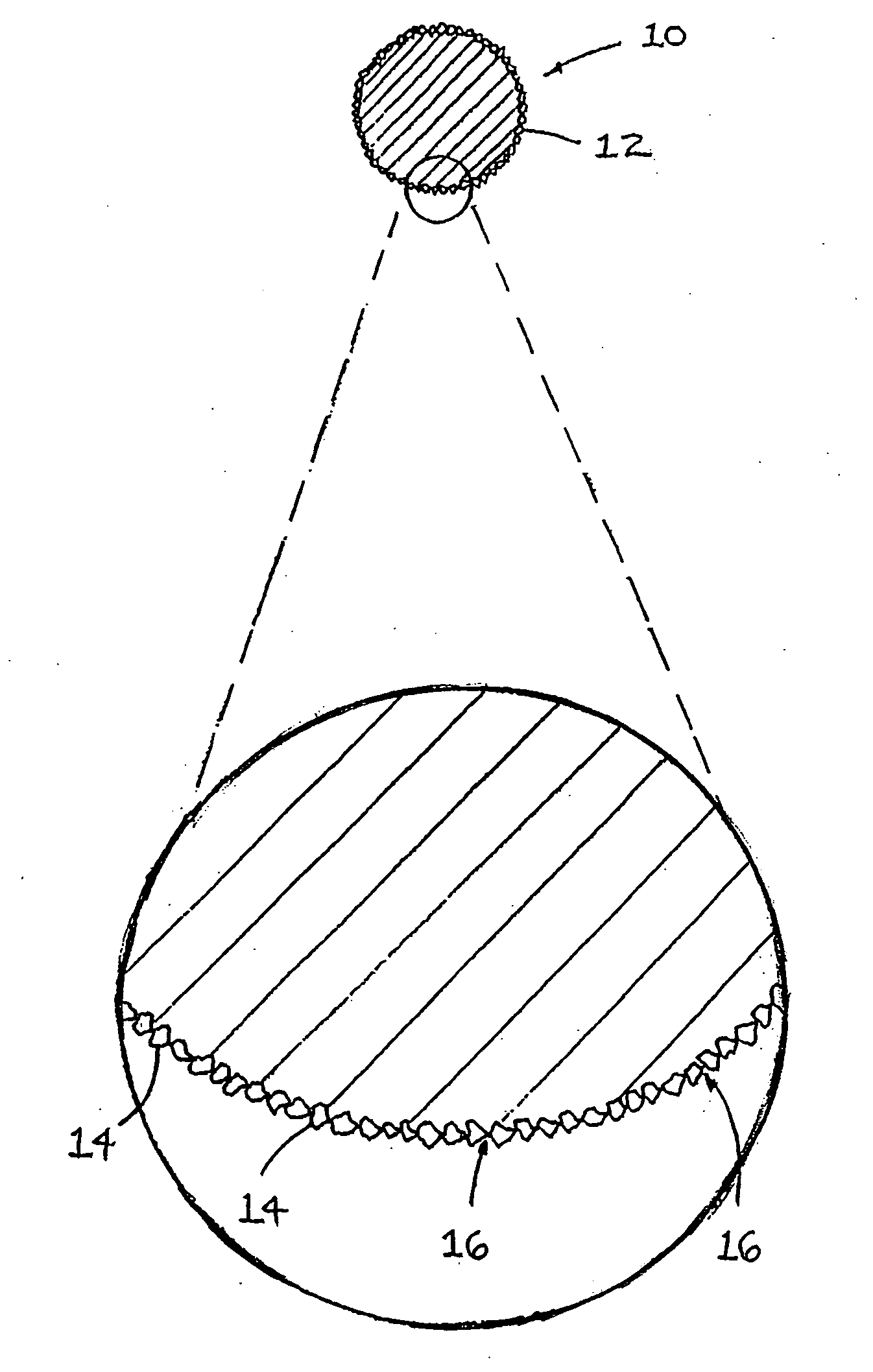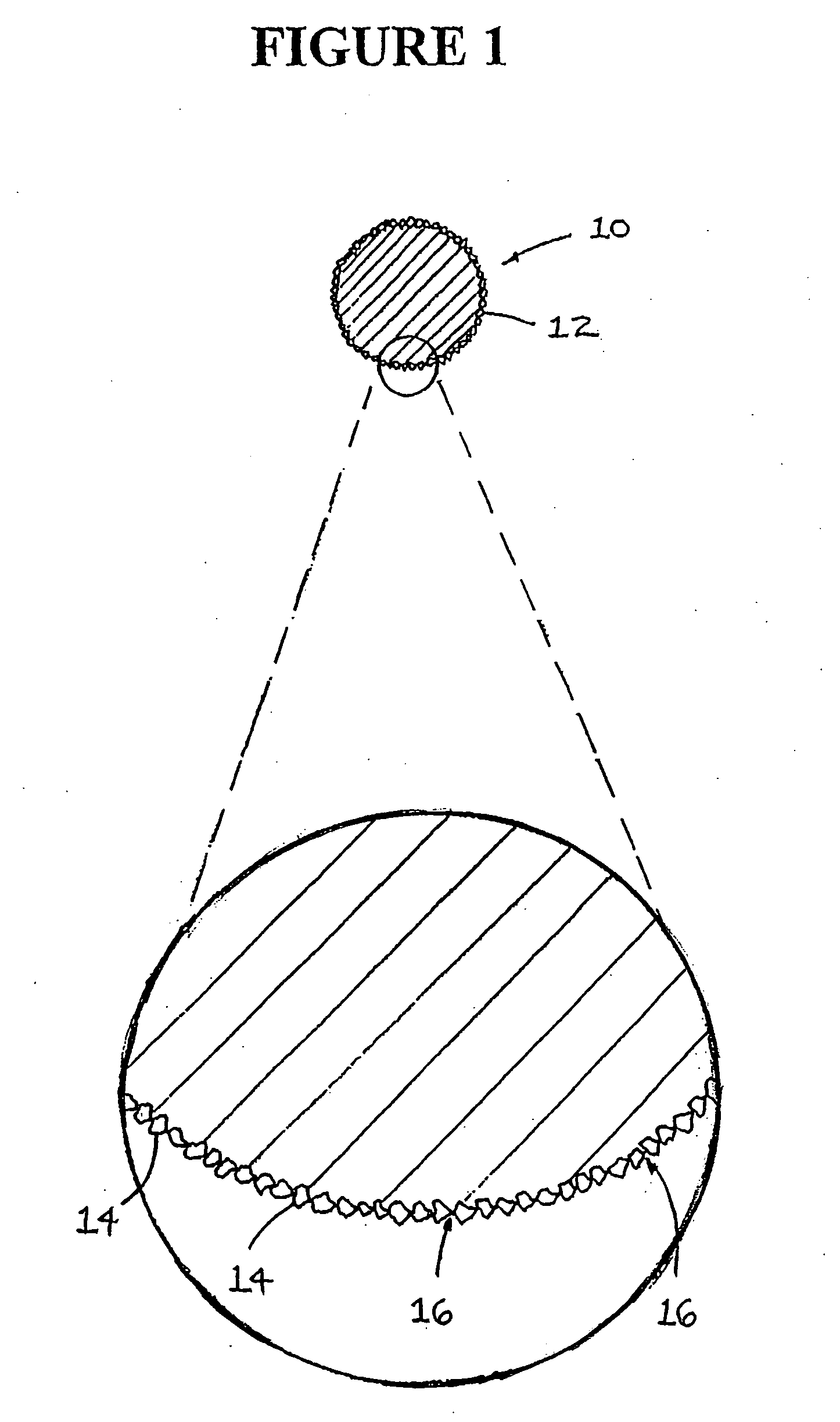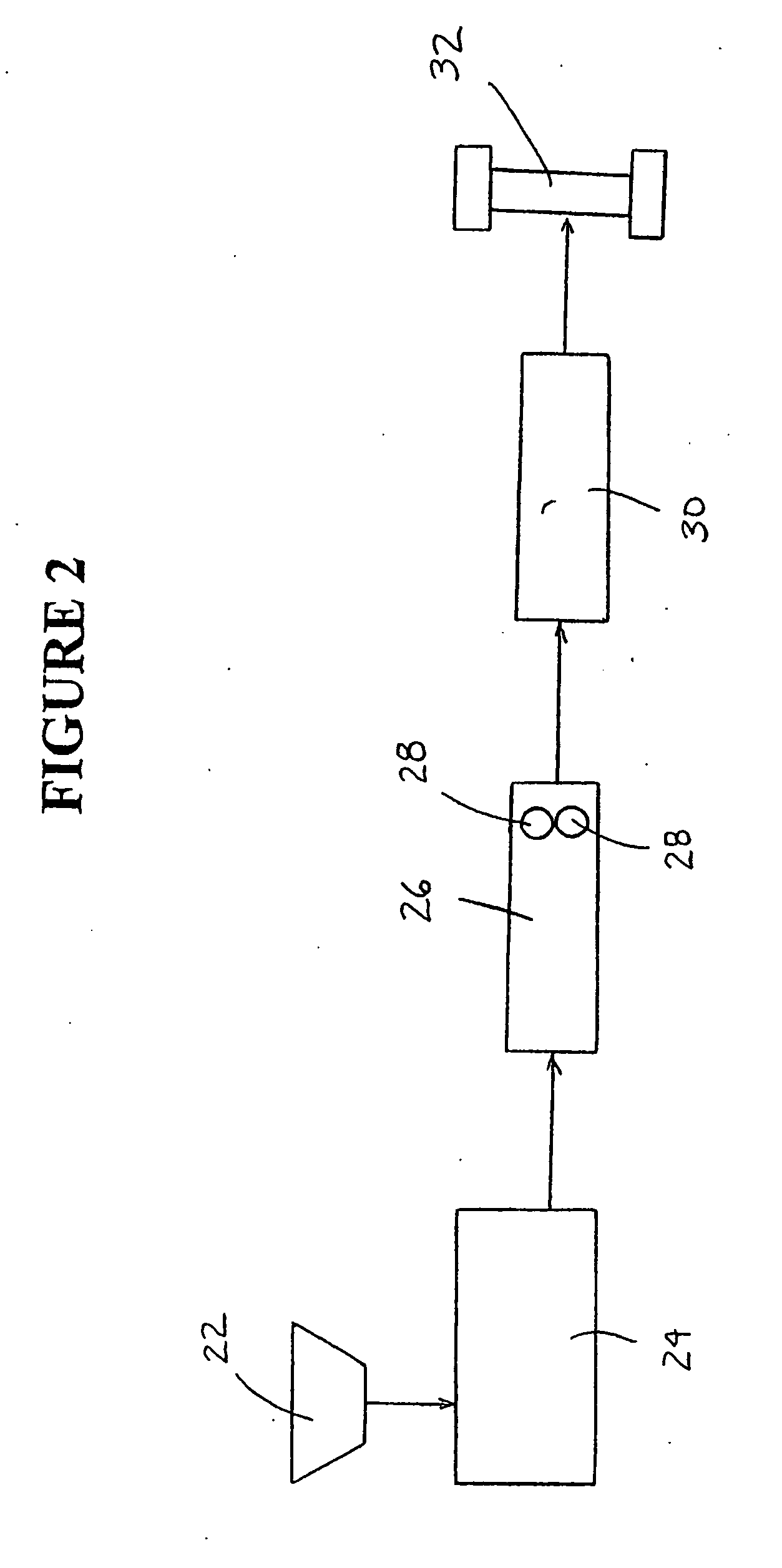Spooled cutting string for string trimmer
a cutting string and rotary string technology, applied in metal working apparatus, agriculture tools and machines, agriculture, etc., can solve the problems of reducing affecting the cutting efficiency of rotary string trimmers, and wasting time and money, so as to improve the cutting performance, reduce the time-consuming, and resist melting and fusion.
- Summary
- Abstract
- Description
- Claims
- Application Information
AI Technical Summary
Benefits of technology
Problems solved by technology
Method used
Image
Examples
Embodiment Construction
[0022]Referring now to the drawings, an exemplary apparatus and methods for making the apparatus of the invention are illustrated by FIGS. 1 through 4. As shown in FIG. 1, the cutting string is designated generally by reference numeral 10. The cutting string 10 is composed of a plastomeric material such as nylon that is extruded to have a substantially circular cross-sectional shape. It is contemplated within the scope of the invention, however, that cutting string 10 may be composed of any suitable material that may be formed into a string-like configuration. Further, it is contemplated within the scope, of the invention that cutting string 10 may be formed to have any suitable cross-sectional shape such as oval, crescent, semi-circular, triangular, square, rectangular, pentagonal, hexagonal, octagonal or any other polygonal shape. It is further contemplated within the scope of the invention that cutting string 10 may be produced by a process other than extrusion such as molding or...
PUM
 Login to View More
Login to View More Abstract
Description
Claims
Application Information
 Login to View More
Login to View More - R&D
- Intellectual Property
- Life Sciences
- Materials
- Tech Scout
- Unparalleled Data Quality
- Higher Quality Content
- 60% Fewer Hallucinations
Browse by: Latest US Patents, China's latest patents, Technical Efficacy Thesaurus, Application Domain, Technology Topic, Popular Technical Reports.
© 2025 PatSnap. All rights reserved.Legal|Privacy policy|Modern Slavery Act Transparency Statement|Sitemap|About US| Contact US: help@patsnap.com



